Examining the top ten countries with the most time zones is a fascinating approach to get understanding of how intricate world geography and timekeeping are. Time zones reveal national handling of their various regions. The length, width, and geographical size of a nation help to define them. These nations, which comprise both big islands and vast continents, find it difficult to coordinate time across several time zones. This influences all aspect of life, including international business. Time zones, global geography, longitudinal span, timekeeping, and territorial reach are the key words one should know this topic. This research covers nations like Russia, with an incredible 11 time zones dispersed over its vast land area, as well as smaller but more geologically varied ones like Indonesia, where island chains create separate time zones.
The mystery is enhanced by things like daylight saving time, vintage sales, and even far-off locations like islands in the ocean. For instance, whereas the US balances its main land territories with its far-off colonies, France’s global possessions provide an abnormally high number of time zones. This issue interests geography aficionados, travellers, and others simply curious about how time runs throughout the planet. Examining these nations, their time zone policies, and how they impact the rest of the globe helps one to highlight a crucial but sometimes disregarded aspect of modern life. It’s ideal for those who like to know more about global time keeping practices and the connections between various locations.
The Top Ten Countries With The Most Time Zones
10. Mexico
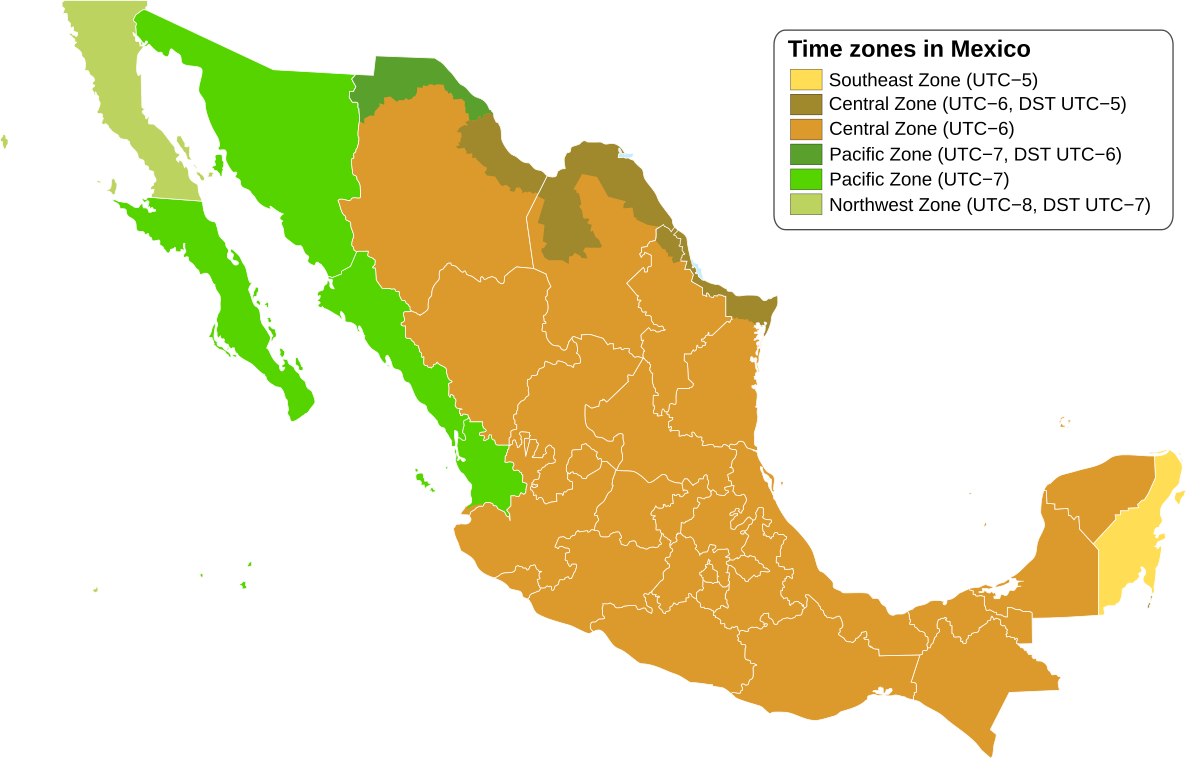
Mexico’s four time zones stem from its longitudinal spread and economic ties with the United States. Spanning from Baja California to the Yucatán Peninsula, the country balances regional needs with cross-border coordination. The Zona Sureste (UTC-5) covers Quintana Roo, aligning with U.S. Eastern Time to boost tourism in Cancun. Zona Centro (UTC-6) includes Mexico City and major hubs like Guadalajara, serving as the nation’s core time zone.
Zona Pacifico (UTC-7) encompasses Baja California Sur and Sonora, with Sonora skipping DST to match Arizona’s schedule. Zona Noroeste (UTC-8) in Baja California, including Tijuana, follows Pacific Time and observes DST, syncing with California. Mexico abolished DST in 2022, except near the U.S. border, simplifying timekeeping but creating regional quirks. This setup reflects Mexico’s efforts to harmonize time across diverse landscapes while supporting trade and tourism, making it a fascinating case for understanding global time management.
9. Brazil

Brazil, South America’s largest nation, spans four time zones due to its massive east-west expanse. Brasília Time (UTC-3) covers major cities like São Paulo, Rio de Janeiro, and Brasília, anchoring most of the population. Amazonas Time (UTC-5) serves Manaus and western states, optimizing daylight for remote areas. Acre Time (UTC-5) in the state of Acre aligns with regional neighbors, adjusted in 2003 for practicality.
Fernando de Noronha Time (UTC-2) applies to the namesake archipelago, set one hour ahead to maximize daylight for tourism. Brazil’s decision to abandon DST ensures year-round consistency, easing coordination across its vast territory. This system highlights Brazil’s challenge of unifying time across urban centers and remote regions, offering insights into how large nations balance geographical diversity with practical timekeeping for business and daily life.
8. New Zealand

New Zealand’s five time zones arise from its main islands and far-flung territories across the Pacific. New Zealand Standard Time (UTC+12) governs Auckland, Wellington, and Christchurch, shifting to UTC+13 during DST (September to April). The Chatham Islands, 800 kilometers east, use Chatham Standard Time (UTC+12:45), with DST moving to UTC+13:45, reflecting their unique position.
Tokelau Time (UTC+13) applies to the Tokelau Islands, while Cook Islands Time (UTC-10) and Niue Time (UTC-11) cover these territories on the opposite side of the International Date Line, creating significant time differences. The Cook Islands and Niue skip DST, while Tokelau aligns with Samoa’s changes. This spread showcases New Zealand’s role as a Pacific hub, managing time across distant territories, which fascinates those exploring global geography and time coordination.
7. Denmark
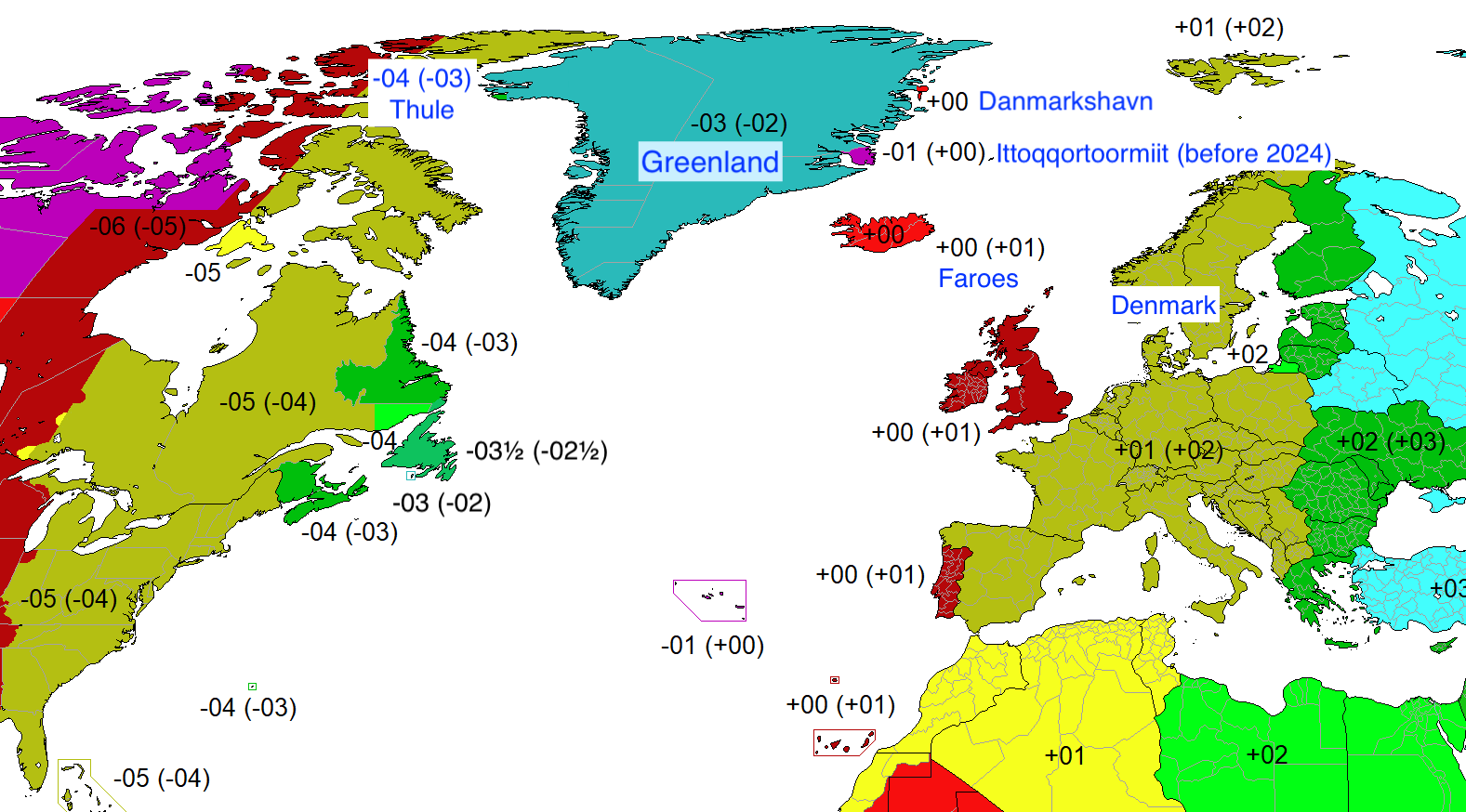
Denmark’s five time zones are surprising for a small European nation, driven by its autonomous territories, Greenland and the Faroe Islands. Central European Time (UTC+1) covers mainland Denmark, including Copenhagen, shifting to UTC+2 during DST. The Faroe Islands use Western European Time (UTC+0), also observing DST (UTC+1). Greenland contributes three zones: Western Greenland Time (UTC-3) for Nuuk, Central Greenland Time (UTC-3 with DST to UTC-2), and Eastern Greenland Time (UTC+0 with DST to UTC+1) for areas like Ittoqqortoormiit. Greenland’s DST varies by region, adding complexity. This setup reflects Denmark’s historical ties to its territories, requiring careful time management across the Atlantic. It’s a compelling example for those studying how small nations with global reach handle timekeeping challenges.
6. Canada
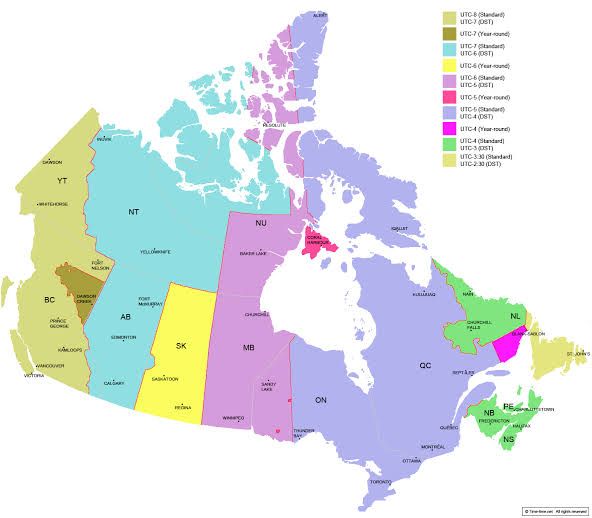
Canada’s six time zones reflect its vast North American expanse, from the Atlantic to the Pacific. Newfoundland Standard Time (UTC-3:30) is unique, used only in Newfoundland and Labrador. Atlantic Standard Time (UTC-4) covers the Maritimes, like Nova Scotia. Eastern Standard Time (UTC-5) includes Ontario and Quebec, while Central Standard Time (UTC-6) spans Manitoba and parts of Saskatchewan, which skips DST. Mountain Standard Time (UTC-7) applies to Alberta and British Columbia, and Pacific Standard Time (UTC-8) covers Vancouver and Yukon. Most regions observe DST (March to November), except Saskatchewan and parts of British Columbia. Canada’s system aligns local time with solar noon, crucial for a country with such diverse daylight patterns, making it a key study for understanding large-scale time zone coordination.
5. United Kingdom

The United Kingdom’s nine time zones stem from its global overseas territories, a legacy of its colonial past. Greenwich Mean Time (UTC+0) governs England, Scotland, Wales, and Northern Ireland, shifting to British Summer Time (UTC+1) during DST. Territories like Gibraltar share UTC+0, while Bermuda uses Atlantic Standard Time (UTC-4). The Falkland Islands follow UTC-3:30, and South Georgia uses UTC-2. Saint Helena, Ascension, and Tristan da Cunha are on UTC+0, while the Pitcairn Islands use UTC-8. The British Indian Ocean Territory operates on UTC+6, and Akrotiri and Dhekelia in Cyprus use UTC+2 (UTC+3 during DST). Caribbean territories like the Cayman Islands and Turks and Caicos use UTC-4 or UTC-5. This diversity highlights the UK’s global influence, offering a rich case for exploring timekeeping across scattered territories.
4. Australia

Australia’s nine time zones cover its mainland and external territories. Australian Western Standard Time (UTC+8) serves Western Australia, while Australian Central Standard Time (UTC+9:30) covers South Australia and the Northern Territory, with DST (UTC+10:30) in South Australia. Australian Eastern Standard Time (UTC+10) includes New South Wales, Victoria, and Tasmania, with DST (UTC+11) except in Queensland. Unique offsets include Australian Central Western Standard Time (UTC+8:45) in Eucla and Lord Howe Standard Time (UTC+10:30) on Lord Howe Island, which observes DST (UTC+11:30). Norfolk Island uses UTC+11, Christmas Island UTC+7, Cocos (Keeling) Islands UTC+6:30, and the uninhabited Heard and McDonald Islands UTC+5. Australia’s complex system, with half-hour offsets and varied DST practices, fascinates those studying geographical time management.
3. United States
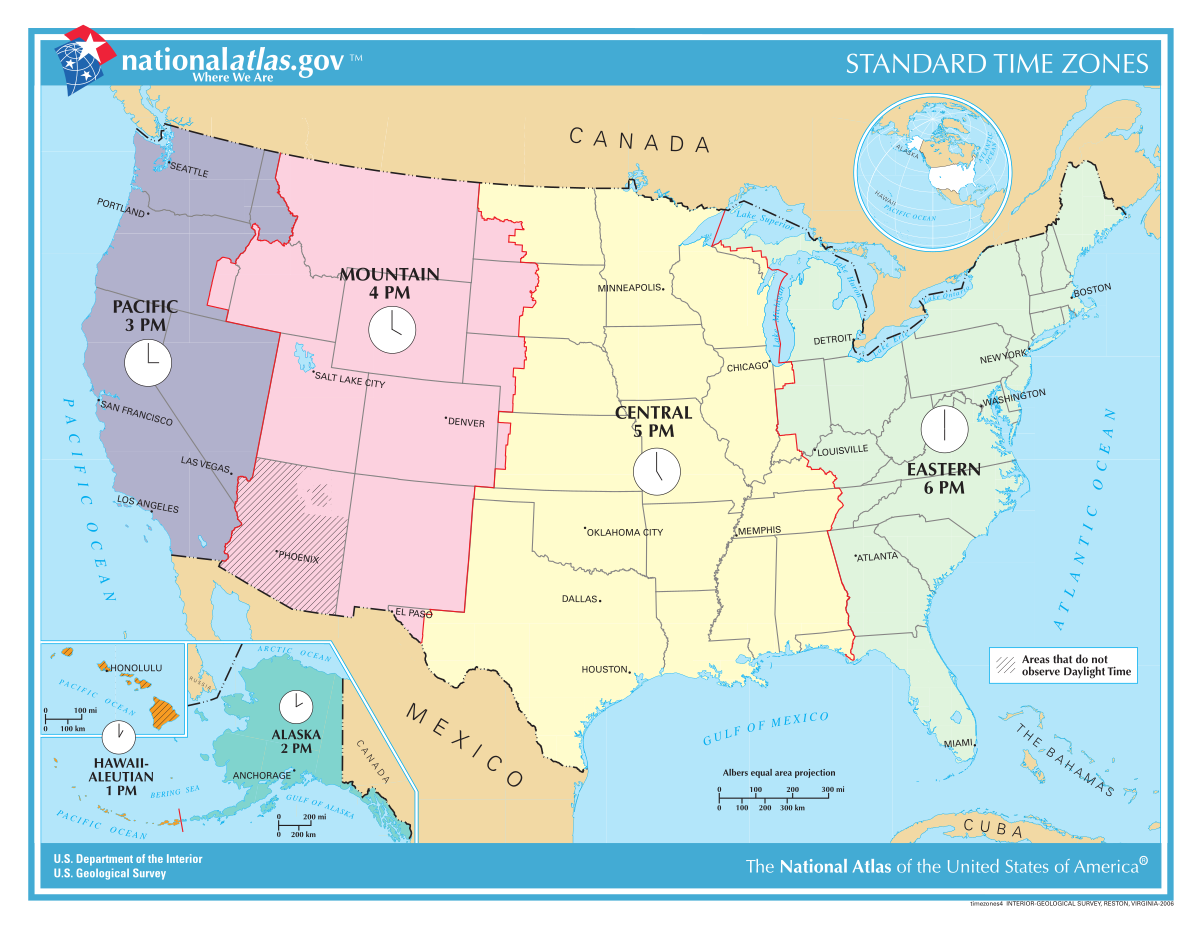
The United States spans 11 time zones, reflecting its continental reach and distant territories. Eastern Standard Time (UTC-5) covers New York and Washington D.C., while Central Standard Time (UTC-6) includes Chicago. Mountain Standard Time (UTC-7) applies to Denver, with Arizona skipping DST except in the Navajo Nation. Pacific Standard Time (UTC-8) governs California, and Alaska Standard Time (UTC-9) covers most of Alaska. Hawaii-Aleutian Standard Time (UTC-10) serves Hawaii, with the Aleutian Islands observing DST. American Samoa uses Samoa Standard Time (UTC-11), Guam and the Northern Mariana Islands use Chamorro Standard Time (UTC+10), Wake Island UTC+12, and Baker Island UTC-12. Most states observe DST (March to November), except Hawaii and most territories. This system underscores the U.S.’s geographical diversity, making it a prime example for time zone studies.
2. Russia
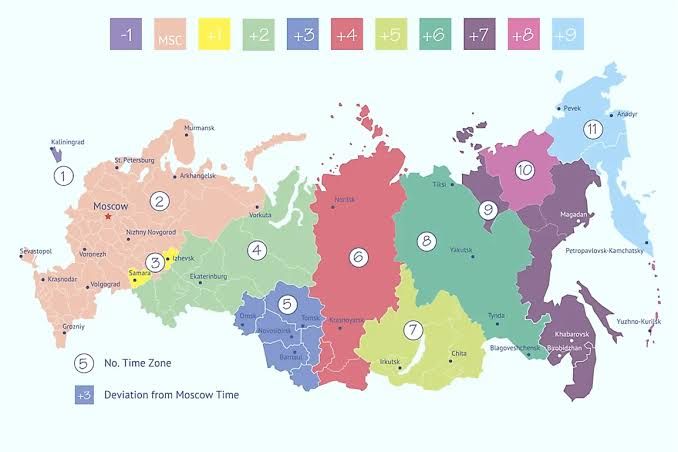
Russia’s 11 time zones cover its immense landmass from Europe to Asia. Kaliningrad Time (UTC+2) serves the western exclave, while Moscow Time (UTC+3) anchors the capital and western regions. Samara Time (UTC+4), Yekaterinburg Time (UTC+5), Omsk Time (UTC+6), Krasnoyarsk Time (UTC+7), Irkutsk Time (UTC+8), Yakutsk Time (UTC+9), Vladivostok Time (UTC+10), Srednekolymsk Time (UTC+11), and Kamchatka Time (UTC+12) span the country’s vast east. Russia abolished DST in 2014, opting for permanent standard time to simplify coordination. This extensive system, covering nearly a quarter of the globe’s longitude, highlights Russia’s unique challenge of unifying time across diverse regions, captivating those interested in global geography.
1. France

France leads with 12 time zones, driven by its overseas territories rather than its compact European mainland. Central European Time (UTC+1) governs Paris, shifting to UTC+2 during DST. French Guiana uses UTC-3, while Saint Pierre and Miquelon shifts from UTC-3 to UTC-2 during DST. Caribbean territories like Martinique, Guadeloupe, Saint Barthélemy, and Saint Martin use UTC-4. Mayotte operates on UTC+3, Réunion on UTC+4, and the Kerguelen Islands on UTC+5. French Polynesia uses UTC-10, Wallis and Futuna UTC+12, and New Caledonia UTC+11. The uninhabited Adélie Land in Antarctica (UTC+10) is often excluded from counts. Most territories skip DST, except Saint Pierre and Miquelon. France’s global reach, a legacy of its colonial history, makes it a standout case for studying time zone diversity and global timekeeping.

